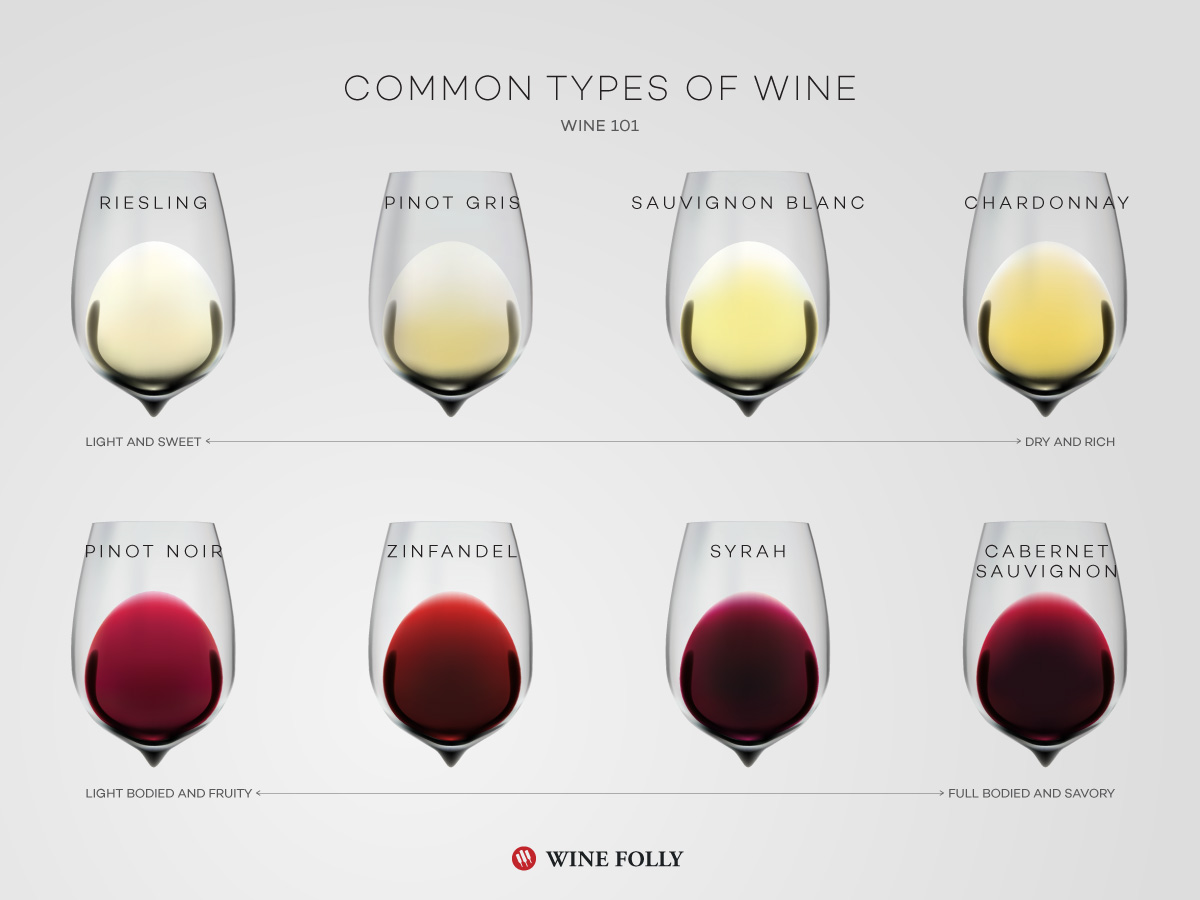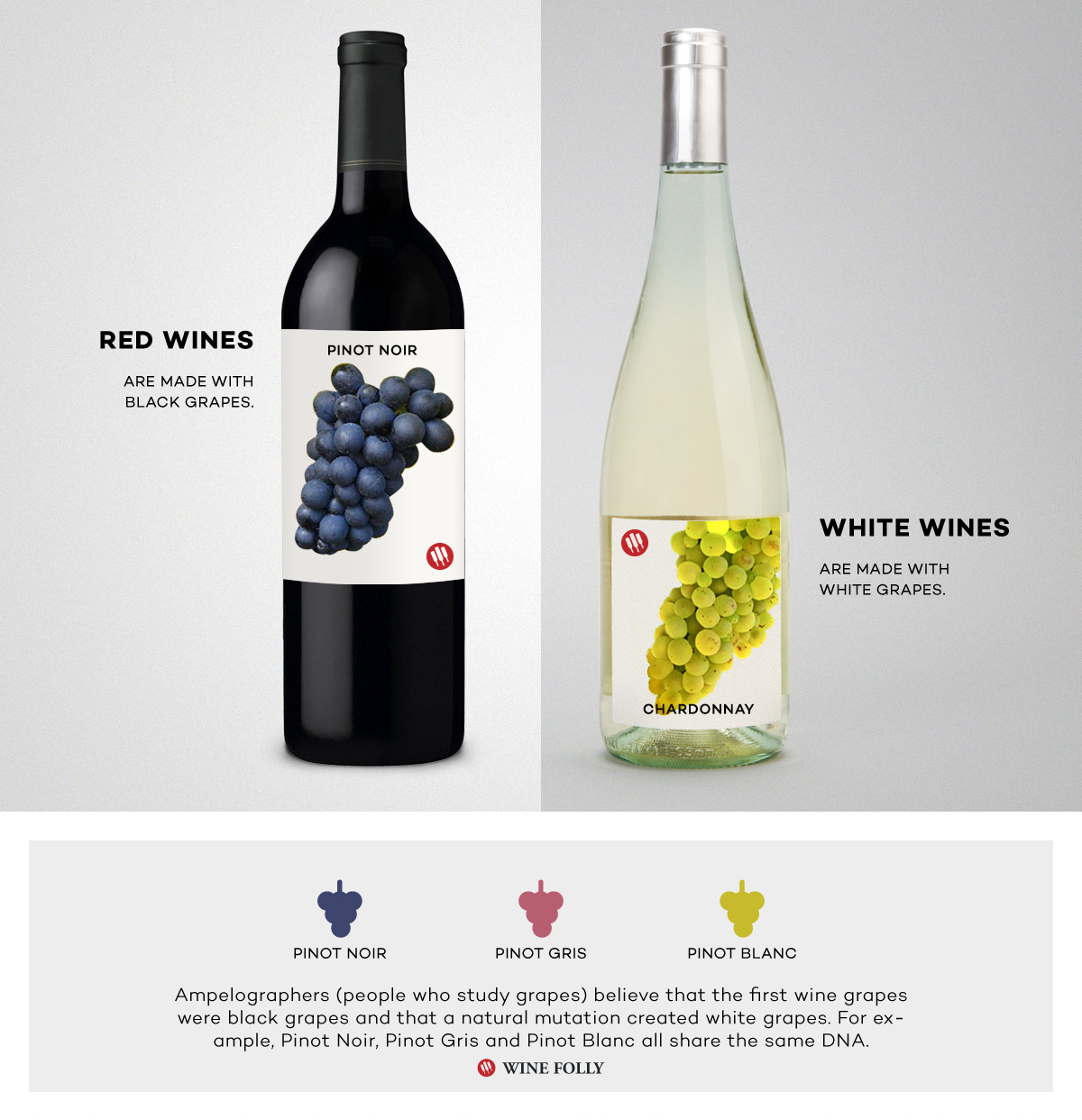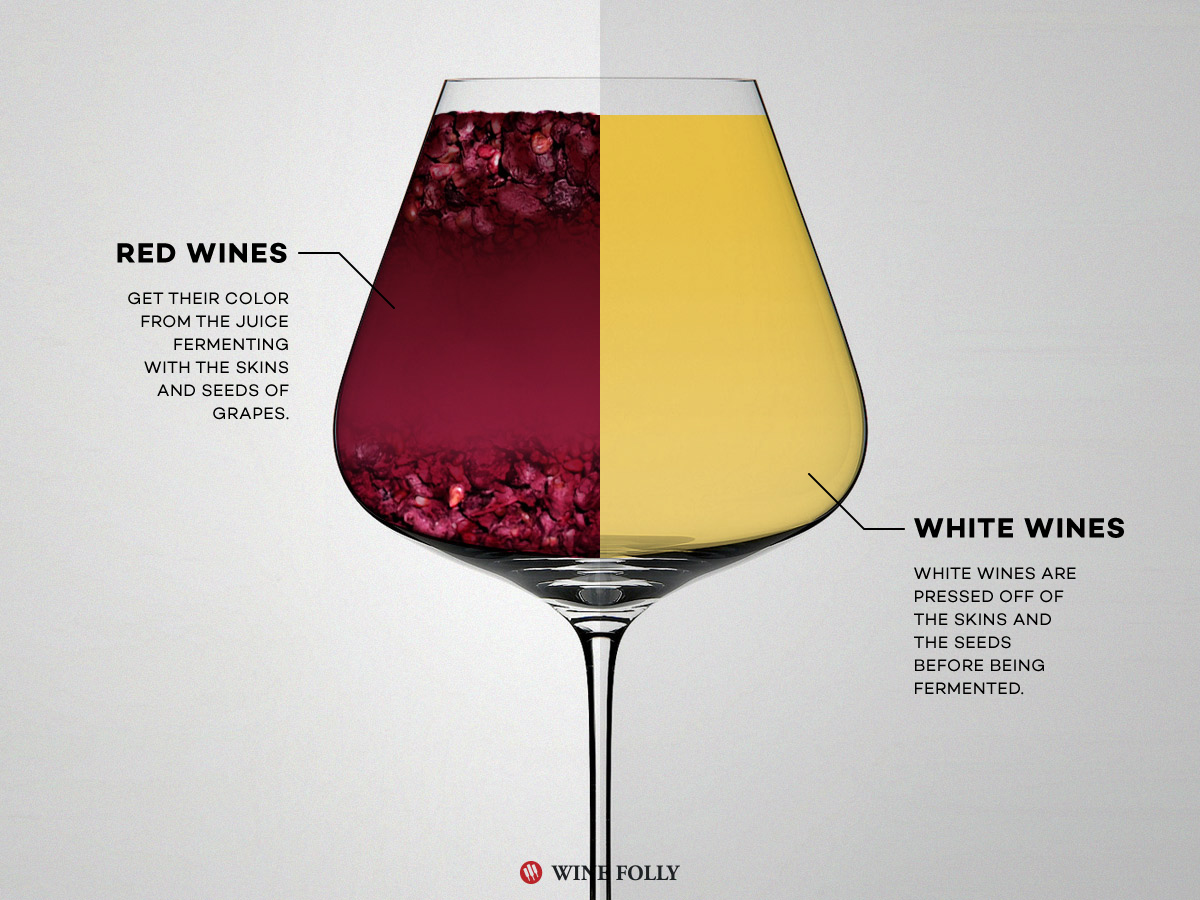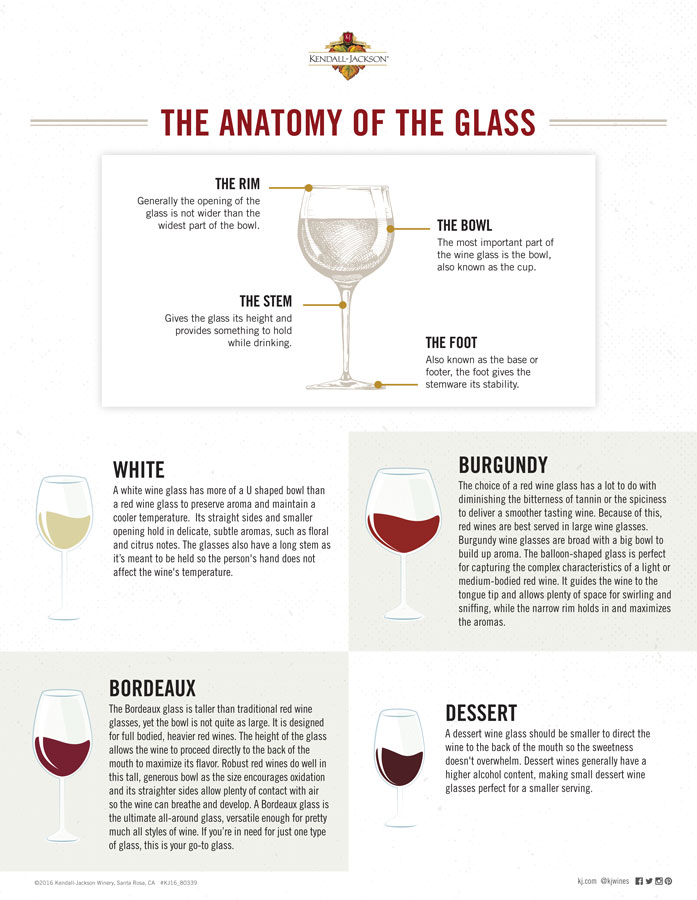Differences Between White And Red Wine Varietals

White and red wine varietals differ in various aspects. One significant difference lies in the grape varieties used for their production. Red wines are made from red and black grape varieties, while white wines can be made from yellow, green, and even red grapes. Another key distinction is the flavor and aroma profiles. Red wines are known for their bold and rich flavors with notes of spices, fruits, and berries, while white wines are lighter, more delicate, and display fresh notes with a slight acidity. The production process also differs, as red wines involve fermentation with the skins and seeds, while white wines do not. Additionally, the health benefits and resveratrol content may vary between the two types of wine.
White Wine Varietals Overview
White wine varietals offer a wide range of flavors and characteristics. Some popular white wine varietals include Chardonnay, Sauvignon Blanc, Riesling, and Pinot Grigio. Chardonnay is known for its rich and buttery flavors, while Sauvignon Blanc is crisp and refreshing with citrusy notes. Riesling is often sweeter with fruity flavors of apricot and peach, while Pinot Grigio is light and refreshing with hints of pear and melon. These white wine varietals provide a refreshing and versatile option for wine drinkers, perfect for pairing with seafood, salads, and lighter dishes.
Red Wine Varietals Overview
Red wine varietals offer a diverse range of flavors and characteristics. Some popular red wine varietals include Cabernet Sauvignon, Merlot, Pinot Noir, and Syrah. Cabernet Sauvignon is known for its bold and full-bodied flavors, while Merlot is smoother and more approachable with notes of red fruit. Pinot Noir offers delicate and earthy flavors, and Syrah is rich and full-bodied with spicy undertones. These red wine varietals provide a robust and complex option for wine drinkers, perfect for pairing with hearty and savory dishes.
White Wine Characteristics

White wines are known for their light and refreshing characteristics. They typically have higher acidity levels, which contribute to their crisp and zesty flavors. White wines often exhibit fruity notes such as citrus, apple, pear, and tropical fruits. They are also known for floral aromas, with hints of jasmine, honeysuckle, and elderflower. White wines are typically fermented at cooler temperatures and are often aged in stainless steel tanks to maintain their bright and vibrant flavors. These characteristics make white wines a perfect choice for pairing with lighter dishes, seafood, and creamy cheeses.
Aroma And Flavor Profiles Of White Wines
White wines offer a diverse range of aromatic and flavor profiles that make them a popular choice among wine enthusiasts. The aroma of white wines can vary depending on the grape variety, but it often includes notes of citrus fruits such as lemon, lime, and grapefruit. Additionally, white wines can exhibit floral aromas like jasmine or honeysuckle, as well as hints of tropical fruits such as pineapple or mango. When it comes to taste, white wines are known for their refreshing and crisp flavors, with a balance of fruity and acidity notes. Some common flavor profiles include apple, pear, melon, and peach. These characteristics make white wines a versatile option for pairing with various dishes and occasions.
White Wine Aging And Food Pairing
White wine aging refers to the process of allowing white wines to mature and develop in flavor over time. Some white wines, such as Chardonnay and Riesling, can benefit from aging, as it allows the flavors to become more complex and the acidity to mellow out. However, not all white wines are meant for aging, and it is important to check the specific recommendations for each varietal.
When it comes to food pairing, white wines are often paired with lighter dishes that allow their delicate flavors to shine. Seafood, poultry, salads, and creamy cheeses are popular choices to pair with white wines. The acidity and crispness of white wines complement and balance the flavors of these dishes, creating a harmonious and enjoyable dining experience.
Red Wine Characteristics

Red wines are known for their bold and robust characteristics. They have deep, dark colors that range from ruby red to deep purple. Red wines typically have higher tannin levels, which give them a firm and dry mouthfeel. They are often described as having flavors of red and black fruits, such as cherry, blackberry, and plum. Red wines also exhibit secondary flavors that can include notes of spices, tobacco, and earthiness. The aging process of red wines can further enhance their complexity and develop more nuanced flavors. Overall, red wines offer a rich and full-bodied drinking experience.
Aroma And Flavor Profiles Of Red Wines
Red wines are known for their complex and rich aroma and flavor profiles. They often exhibit primary fruit flavors such as cherry, blackberry, and plum, along with secondary notes of spices like cinnamon, clove, and black pepper. Some red wines may also have earthy or smoky characteristics, reminiscent of tobacco or leather. The aging process of red wines can further enhance these flavors, adding layers of complexity and depth. Overall, red wines offer a full-bodied and robust drinking experience, with a diverse range of flavors to explore.
Red Wine Aging And Food Pairing
Red wine aging has a significant impact on its flavor and complexity. As red wines age, they undergo subtle changes that enhance their characteristics. The tannins in red wine soften over time, resulting in a smoother and more rounded flavor profile. This aging process allows the flavors to meld and develop, creating a deeper and richer taste.
When it comes to food pairing, aged red wines tend to pair well with bold and flavorful dishes. The complexity of aged red wines can complement the intensity of dishes like roasted meats, stews, and aged cheeses. The robust flavors in these dishes can stand up to the depth and richness of aged red wines, creating a harmonious and satisfying pairing experience.
Key Contrasts Between White And Red Wine

White and red wine offer contrasting characteristics in terms of color, aroma, flavor, and production processes. The key contrasts between white and red wine include:
- Color: White wine is pale yellow or golden, while red wine is deep red or purple.
- Aroma and Flavor: White wines are often lighter and crisper with flavors like citrus, pear, and floral notes, while red wines are richer and bolder with flavors like red berries, dark fruits, and earthy undertones.
- Production Process: White wine is made from the fermentation of pressed grape juice without skin contact, while red wine is made by fermenting crushed grapes with the skin intact.
- Health Benefits: Red wine contains higher levels of resveratrol, a compound known for its potential health benefits, compared to white wine.
These key contrasts contribute to the diverse range of wine options available, allowing individuals to choose based on their preferences and pairing choices.
Production Process Variations
Production Process Variations: The production process for white and red wines differs significantly, resulting in distinct characteristics. White wine is made from the fermentation of pressed grape juice without skin contact. This process allows for a lighter, crisper wine with less tannin. In contrast, red wine is made by fermenting crushed grapes with the skin intact. The skin contact during fermentation gives red wine its rich color and bold flavors. The length of fermentation and the use of oak barrels also contribute to the differences between white and red wine.
Health Benefits And Resveratrol Content
Red wine is often touted for its health benefits due to its higher content of resveratrol, a polyphenol found in grape skins. Resveratrol has been linked to various positive health effects, including reducing inflammation, protecting against cardiovascular disease, and potentially even extending lifespan. It acts as an antioxidant, helping to combat free radicals in the body. While white wine also contains antioxidants and beneficial compounds, red wine generally contains higher levels of resveratrol due to its contact with grape skins during the fermentation process. However, it is important to note that these health benefits are associated with moderate consumption, and excessive alcohol intake can have negative effects on health.
White Vs. Red Wine: Popular Varietals Comparison

When comparing popular white and red wine varietals, there are noticeable differences in flavor profiles and characteristics. Chardonnay, a popular white wine, is known for its rich and creamy texture with flavors of tropical fruits and buttery notes. On the other hand, Merlot, a popular red wine, offers a smooth and velvety mouthfeel with flavors of red berries, plums, and chocolate undertones. Sauvignon Blanc, a crisp and refreshing white wine, showcases vibrant citrus and herbaceous flavors while Cabernet Sauvignon, a robust red wine, presents bold flavors of blackcurrant, black cherry, and hints of spice. Each varietal offers a distinct taste experience, catering to different preferences and pairing options.
Chardonnay Vs. Merlot
Chardonnay and Merlot are two popular wine varietals that offer contrasting taste experiences. Chardonnay, a white wine, is known for its rich and creamy texture with flavors of tropical fruits and buttery notes. It pairs well with dishes like roasted chicken or seafood. On the other hand, Merlot, a red wine, offers a smooth and velvety mouthfeel with flavors of red berries, plums, and hints of chocolate. It pairs well with red meat dishes like steak or lamb. Whether you prefer the vibrant and refreshing characteristics of Chardonnay or the bold and fruity notes of Merlot, both varietals are sure to impress wine enthusiasts.
Sauvignon Blanc Vs. Cabernet Sauvignon
When comparing Sauvignon Blanc and Cabernet Sauvignon, the differences between these two wine varietals become apparent. Sauvignon Blanc, a white wine, is known for its crisp acidity, vibrant citrus flavors, and herbaceous undertones. It pairs well with seafood, salads, and light chicken dishes. On the other hand, Cabernet Sauvignon, a red wine, is bold and full-bodied with rich flavors of black fruits, cedar, and tobacco. It pairs well with grilled meats, hearty dishes, and aged cheeses. Whether you prefer the refreshing and zesty characteristics of Sauvignon Blanc or the robust and complex flavors of Cabernet Sauvignon, both varietals offer unique and enjoyable wine experiences.
Conclusion

In conclusion, the comparison between white and red wine reveals a stark contrast in characteristics, production processes, and food pairings. White wine is known for its crisp acidity, citrus flavors, and versatility with seafood and lighter dishes. On the other hand, red wine is bold, full-bodied, and pairs well with grilled meats and robust flavors. Whether you prefer the refreshing qualities of white wine or the complexity of red wine, both offer enjoyable wine experiences. Ultimately, the choice between white and red wine depends on personal preference and the occasion.
Factors To Consider When Choosing Between White And Red Wine
When it comes to choosing between white and red wine, there are a few factors to consider. Firstly, personal preference plays a significant role. Do you prefer the crispness and refreshing qualities of white wine or the boldness and complexity of red wine? Secondly, the occasion and food pairing should be taken into account. White wines tend to pair well with seafood and lighter dishes, while red wines complement grilled meats and robust flavors. Lastly, consider the weather and season. White wine is often enjoyed during warmer months, while red wine is favored in colder weather. Ultimately, the choice between white and red wine depends on individual taste and the specific situation.
Pairing Wine With Different Dishes For An Enhanced Dining Experience
When it comes to enhancing the dining experience, pairing wine with different dishes can make a significant difference. White wine pairs exceptionally well with white meat, white fish, and pasta dishes. The crispness and acidity of white wines complement the flavors of these lighter dishes. On the other hand, red wines are best suited for red meats and desserts. The boldness and complexity of red wine can enhance the richness and depth of flavors in these dishes. For those who prefer a refreshing and versatile option, rosé wine pairs beautifully with seafood. Lastly, sparkling wines are a great choice to pair with shellfish, fruits, and cheeses, adding a touch of elegance to any meal.
FAQ About White Vs Red Wine: Contrasting Wine Varietals
Q: What are the key differences between white and red wine?
A: One key difference is the grape varieties used. White wine is typically made from white or green grapes, while red wine is made from red or black grapes with their skins left on during fermentation.
Q: How does the taste of white wine differ from red wine?
A: White wine is generally lighter, crisper, and more acidic with flavors like citrus, apple, and floral notes. Red wine tends to be richer, bolder, and more tannic with flavors such as red berries, plums, and spices.
Q: Are there differences in serving temperatures for white and red wine?
A: Yes, white wine is usually served chilled at around 45-50°F (7-10°C) to enhance its crispness, while red wine is served at slightly warmer temperatures, between 60-65°F (16-18°C) to bring out its flavors.
Q: Can white wine be aged like red wine?
A: While some white wines can benefit from aging, the majority are intended to be consumed young and fresh. Red wines, on the other hand, are more commonly aged to allow their flavors to develop and mature.
Q: Do white and red wines pair differently with food?
A: Yes, white wine pairs well with lighter dishes like seafood, poultry, and salads, while red wine complements heartier fare such as red meat, stews, and pasta with rich sauces.
Q: Are there health benefits associated with white and red wine?
A: Both white and red wine contain antioxidants that may offer some health benefits when consumed in moderation. Red wine, however, is often touted for its higher levels of resveratrol, a compound linked to various health advantages.
Q: Can you mix white and red wine to create a new blend?
A: While blending white and red wines, known as rosé or blush, is a popular winemaking technique, mixing the two different wines is not a commonly recommended practice for casual drinking due to their distinct flavors and characteristics.

Family-owned and proudly serving the Black River Falls area since 1973. Our convenience store, bar, and restaurant within the same building are unique to the area. We accommodate our smokers with a separate facility. We are conveniently located within two miles of the interstate at the corners of Highway 12 and 27. We are your one-stop destination for a restaurant/bar and convenience store.